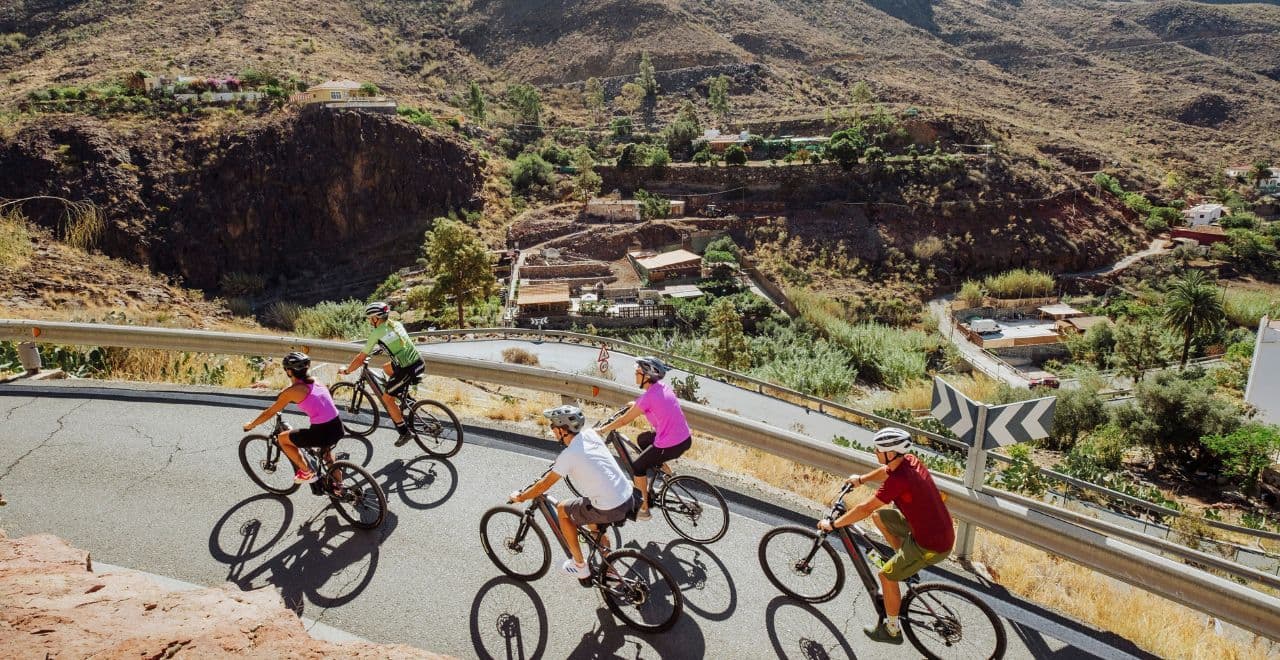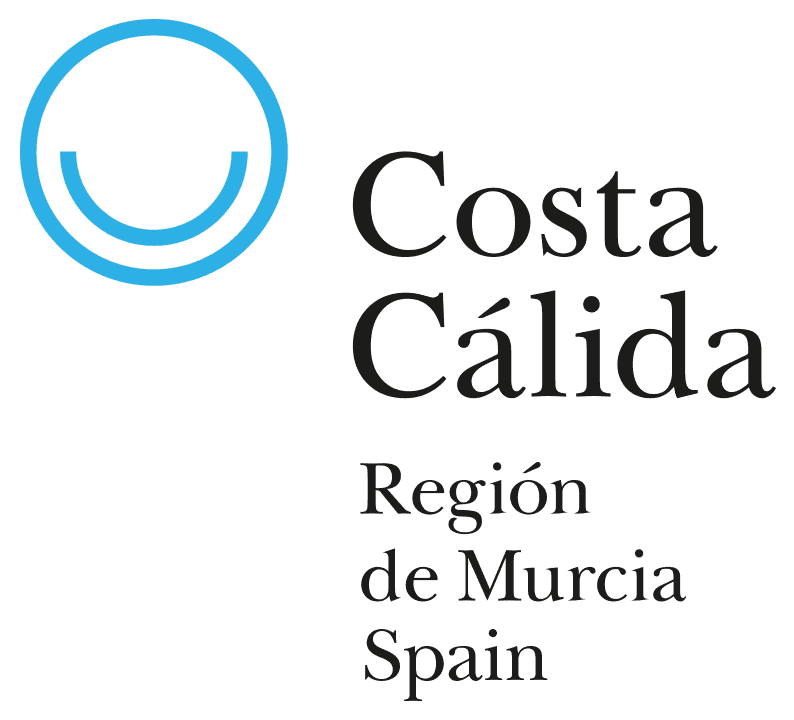
Experience the best cycling in Gran Canaria
Cycling in Gran Canaria
Explore the best cycling routes in Gran Canaria with Love Velo. Discover challenging climbs like Valley of the Tears and Pico de las Nieves, find bike hire options, and get expert tips for your cycling holiday.
Why Gran Canaria?
Road Riding In Gran Canaria
Love Velo are the experts when it comes to road cycling in Gran Canaria.
From climbing the Valley of the Tears, the Tauro Pass and Pico de las Nieves, we have you covered. The cycling in Gran Canaria offers a great alternative to road cycling in Tenerife so if you have conquered Teide and Masca, now is the time to check out some of the best road riding in Europe in Gran Canaria.
We know which routes to ride, where to base yourself, and of course the best hints and tips to help you get the most of of a Gran Canaria cycling holiday. To help you plan your next cycling holiday to Gran Canaria, use our guide below or if you prefer make an enquiry.
Why Cycle In Gran Canaria
Gran Canaria is a popular and well known Canary Island but its base as a cycling destination is perhaps not as well known. Cyclists are very aware of what Lanzarote & Tenerife can offer but Gran Canaria doesn’t have the same profile. We think it should as it’s easily on a par with other Canary Islands.
Firstly, the cycling is sensational. Many people know about the climb of Mt Teide on Tenerife, but did you know that you can also ride a similarly unbroken climb of close to 50km in Gran Canaria? That ride starts in Maspalomas. From here, you will ride up to the top of Pico de las Nieves, the highest point in the centre of Gran Canaria. At just below 2,000m above sea level, you’ll have uninterrupted views out over the UNESCO Biosphere Reserve. You can also see Roque Nublo, literally translated as Rock in the Clouds. Tenerife will be in view on a clear day as well as the Atlantic stretching out to the horizon.
Secondly, the island also offers other smaller punchier climbs, toughest than Lanzarote, but perhaps not quote as tough as Tenerife. Climb up to Soria for stunning views over the National Park, or ride deep into the heart of Gran Canaria’s craggy interior, and take on the epic Valley of the Tears. The VOTT is a 12km unrelenting climb under the intense sun, with sections ramping up to a massive 25%.
Finally, we love cycling in Gran Canaria as there are budgets for all types of traveller. Maspalomas offers well priced accommodation whilst Meloneras, just down the beach, offers a more luxurious setting with some fantastic hotels.
Explore Gran Canaria
The Best Routes & Rides
If you want to cycle in Gran Canaria it’s likely that you will want to cycle the main climbs on the island. Our cycling holidays in Gran Canaria are based in the south of the island, in Maspalomas and in Meloneras.
We think that is area the perfect base to climb from as you can ride directly north to enjoy the climb of Soria, from the east or west to ride Pico de las Nieves, or north west to hit the Valley of the Tears. The Tauro Pass will also be very close by.
Valley Of The Tears
The Valley of the Tears is probably the most well known climb on the island, probably because of its name. It is indeed a tear inducing ride, as whilst it’s only a 12.4km ascent, (compared to 45km if you ride from Maspalomas to Pico de las Nieves), the gradient rarely falls below 11%.
There are sections at a huge 25% and the ramps begin almost immediately. There is no acclimatisation to the climb, or breaks to provide respite. This is simply a tough climb whichever way you look at it.
The climb also begins from close to the centre of the island and with the surrounding cliffs and hot sunshine, this can be a sweltering a ride even in Spring or Autumn.
Pico De Las Nieves
The highest point in Gran Canaria is Pico de Las Nieves, in the centre of the island. If you’re riding from Maspalomas or Meloneras, you can choose to ride via Arteara or Agiumes. Whichever route you choose, the climb is tough and long as you’ll ride from sea level to 2,000m across approximately 45km. That’s a fairly similar ride to Mt Teide in Tenerife.
Our favourite route up goes via Aguimes to the east of the island. In recent years the old town has been restored so it’s a great place to watch the world go. Stop here either before your ascent to the top of Pico de las Nieves, or as a reward on your descent. It’s a typical Canarian hill town with a church in the middle and cobbled streets displaying a slow pace of life. The hillside also still has unique cave houses that are hundreds of years old and which now offer a new type of eco tourism.
Once you pass through Aguimes, this is where the climb really starts to kick up. You’ll ride over 1,600m in the last half of your ride. The interesting thing about this climb though is that there are occasional breaks in the climb to provide slight relief for aching legs. Just outside Arteaga, after Fataga, and as you enter the Riscos de Tirajana National park, there are mini descents.
Once you’ve summited, you will get 360 views of Roque Nublo (rock in the clouds) as well as Mt Teide dominating the horizon.
Make An Enquiry
We are the cycling holiday experts.
Whether you're a keen road cyclist, enjoy riding an e-bike or hybrid bike, or want to get your family more active, we have the perfect cycling holiday for you.
Soria
Soria is a great ride from Maspalomas. You can enjoy a ride up to 700m above sea level, enjoy some stunning views and head back to Taurito for lunch at the beach.
The climb to Soria averages about 8% and kicks off just past Puerto de Morgan. By this point you will have ridden about 400m of ascent before a gentle plateau to Puerto de Morgan. From here, it’s 8.5km to the lookout. You will be rewarded with 360 degree views of craggy peaks, sheer cliffs and the waters of Embalse de Soria beneath you.
If you want to tag Pico de las Nieves to the ride, descend out of Soria and take the first right just after Baranquillo Andres for a mammoth climb up to the highest peak in Gran Canaria.
Tauro Pass
Our final route we recommend you riding is the Tauro Pass, to the west of Soria and south of both Pico de las Nieves and the Valley of the Tears.
Ride up the coast to the beach at Taurito and climb from there to Mogán. You’ll hit plenty of switchbacks and you can checkout the amazing lookouts which give you great views of Tenerife to the west. Once you’ve summited the climb, you can ride up north to any of the other climbs listed above, or head back towards the coast for a well earned coffee and piece of cake.
Where To Stay
Maspalomas
Most of our cyclists stay in Maspalomas to the south. It is a cosmopolitan town with plenty of restaurants and bars. It’s really popular with cyclists, golfers, families and pretty much anyone else who enjoys sunshine, beaches and relaxation.
The reason we love it is that you can ride all the climbs above pretty easily without needing guiding. There are also plenty of other cyclists in Maspalomas so if you are a solo rider, we can tag you on to plenty of groups that ride regularly in the winter months.
Meloneras
If you’re looking for something a little more upmarket, head down the beach to Meloneras, a few kilometres from Maspalomas. Meloneras is a little more sophisticated and has plenty of great 5* resorts and fantastic cycling friendly hotels.
Other Areas
You could choose to stay somewhere like Taurito or Puerto de Mogán (the “little Venice of Gran Canaria) for a more traditional stay. The fishing ports are home to boutique hotels, restaurants serving the freshest sea food and great beaches.
If you want to stay in the hills, this will be a totally different experience to the hustle and bustle of the beach towns. You need to remember though that your options off the bike will be limited. Most accommodation will be small and traditional, as will the restaurants and bars.
Reviews
What our Cyclists Say
Awesome customer Service like it used to be. When planning my husband's 50th birthday and knowing very little about cycling I decided to try Love Velo and I can't recommend them, and the service I've received from James Danvers highly enough.
Read full reviewAbby
I booked through Love Velo because the reviews were so good. I wasn't disappointed. Right from my first contact with LV they were easy to talk to and although I dithered (my first cycling trip abroad) they didn't press me. When I eventually confirmed my booking they took care of everything.
Read full reviewStephen
Everything about Love Velo has been faultless. From the initial notification of them teaming up with Le Col and to the pricing being unbelievable and then the customer service, top class. James, if all the staff are as attentive to every detail as you are then everyone will be as lucky as I have been. 100% at some point, hopefully in the near future I will be booking again with you guys. Thank you again
Read full reviewIan
When To Go Cycling In Gran Canaria
We run cycling holidays to Gran Canaria all year round. The Canaries, despite being off the coast of Africa, often don’t get too oppressively hot, and if they do, it is right in the middle of the summer.
You can comfortably cycle from September until May. Most people tend to cycle in Gran Canaria from about October onwards. January is the coldest month but it can still see temperatures in the 20s, perfect for cycling. Group rides are in the winter months, between October and March.
What’s The Weather Like For Cyclists?
In a word, it’s perfect. The south of the island where we base our trips. Most Gran Canaria visitors stay here as it is often the warmest part of the island. There’s less wind than the north and it’s drier, especially in the winter months.
The weather is of course much warmer on the coast so if you choose to ride up to Pico de las Nieves, 2,000m above sea level, it can get quite crisp. We always recommend taking a windbreaker and some arm warmers for the descents.
What Are The Roads Like?
The roads are fantastic. Like its neighbours in Tenerife and Lanzarote, the tarmac is pristine, especially on roads used frequently.
The more remote the road, the less well maintained the tarmac. We also recommend staying off the coast road other than to ride to Taurito or as a way to get to the Tauro Pass. It’s just busy and whilst the locals are courteous drivers, nobody really wants to ride with heavy traffic.
Is Gran Canaria Suitable For Families?
Gran Canaria is suitable for families, but unfortunately only if they are chilling on the beach! Like nearly every road in the Canary Islands, you’re either climbing or descending. Beginner riders will struggle on these roads, even with the help of an e-bike. The roads are too dangerous for children, no matter how experienced they are.
In terms of overall fitness, if you’re going to take on Pico de la Nieves or the Valley of the Tears, you need to be properly prepared and fit. If you want to ride the smaller climbs, like the Tauro Pass and up to Soria, so long as you can handle an ascent of about 700m across approximately 30km, you will be fine.
Should I Go On A Bike Tour In Gran Canaria?
Most of our cycling holidays to gran Canaria are self guided but we also offer daily rides from Maspalomas.
You can join a ride each day other than Thursday and Sunday. Each ride has 3 different levels for you to enjoy. Choose a tough day in the saddle, a medium distance or a cafe style ride. During the week, we will ride the Tauro Pass, Soria, Pico de las Nieves and other climbs.
Explore cycling holidays
The Best Places for Cycling Holidays
Why us
Why book with Love Velo?
ABTOT protected
Many of our holidays are protected by ABTOT and you can find our bond using membership number 5523.
Trust
Rated 5* on Trustpilot, 10,000+ Cyclists Travel with Us Yearly.
Exclusive Perks
Free Access to Rewards and Discounts on Top Brands like Garmin, Le Col and Oakley.
Easy Payment
Spread Your Tour Cost Interest-Free.








